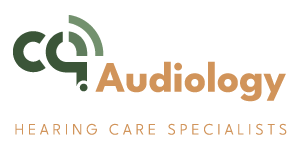Contact Us
We would love to speak with you.
Feel free to reach out using the below details.
Visit our main clinic
- T33 & 34A, City Centre Plaza, 24 Fitzroy Street, Rockhampton, QLD 4700
Get In Touch
- Phone: (07) 4848 6528
- Email: reception@cqaudiology.com.au
Trading Hours
- Mon-Fri 9:00AM - 5:00PM
- Sat 9:00AM - 12:00PM
Get a callback
Fill out the form below and we will contact you as soon as possible!
CQ Audiology Visiting Sites
BARCALDINE
Barcaldine 60 & Better Program
13 Willow Street
QLD 4725
BILOELA
Ace Medical Centre
48 Grevillea Street
QLD 4715
BLACKALL
Blackall Hospital
189 Landsborough Highway
QLD 4472
BLACKWATER
North Blackwater General Practice
14 Blain Street
QLD 4717
EMERALD
Lot 1 Pilot Farm Road
QLD 4720
MOUNT MORGAN
41 Morgan Strreet
QLD 4714
ROCKHAMPON CITY
T 33 & 34A City Centre Plaza
24 Fitzroy Street
QLD 4700
TAMBO
Tambo Multi Purpose Centre
26 Arthur Street, Tambo Queensland 4478
LONGREACH
North & West Queensland Primary Health Sercvies
19 Duck Street, Longreach Queensland 4730
YEPPOON
Keppel Bay Medical Centre
Shopt 26, Keppel Bay Plaza
64-67 James Street
QLD 4703

Experience Unmatched Clarity with Hearing Test Kabra - Rockhampton
Why Do I Need a Hearing Test?
Do you need a hearing test Kabra – Rockhampton QLD? Have you ever considered how vital your hearing is to your daily life? From enjoying conversations with loved ones to staying alert to surrounding sounds, your auditory health impacts nearly every aspect of your existence. Yet, many people overlook the importance of regular hearing tests. If you’ve noticed that you’re asking others to repeat themselves more often, or if background noise frustrates you more than it used to, it might be time to check in on your hearing health. What you discover could not only explain some of your recent challenges but also open up avenues for improving your quality of life. Curious about what signs to look for and what to expect from a hearing test?
Importance of Regular Hearing Tests
Regular hearing tests are essential, as they help you catch any decline in your hearing early and prevent further loss. If you’re over 60, it’s recommended that you have these checkups annually. This frequent monitoring allows you to notice subtle changes in your hearing ability, ensuring you can take action before the situation worsens. For younger adults, testing every 3-5 years is advisable. This not only maintains your hearing health but also supports cognitive functions, which can be impacted by hearing decline.
For children, early testing plays a critical role in language development. Detecting any hearing issues promptly can make a significant difference in their communicative and educational growth. Moreover, regular assessments can help you adapt better to various lifestyle changes that might affect your hearing. If you have any pre-existing conditions, these tests become even more crucial for timely interventions.
Moreover, by keeping up with your hearing tests, you can avoid the emotional strain that often accompanies untreated hearing loss, such as frustration and loneliness. Maintaining good communication is key to a fulfilling life, and regular hearing tests ensure you don’t miss out on engaging fully with the world around you.
Signs You Need a Hearing Test
While maintaining your hearing tests helps in early detection, it’s also important to recognise when you might need to schedule one. If you’re finding it tough to follow conversations, whether at work with co-workers or at family gatherings, this could be a sign that your hearing isn’t as sharp as it used to be. Additionally, if you often ask people to repeat themselves or feel that you’re straining to hear, these are clear indicators that it’s time to check your hearing.
Another significant sign is a persistent ringing in your ears, known as tinnitus. This can’t only be annoying but might also suggest underlying issues with your hearing health. Moreover, if you’re feeling socially embarrassed because you can’t keep up with conversations, or find yourself withdrawing from social situations due to difficulty hearing in noisy environments like restaurants, it’s crucial to take action.
Don’t overlook changes in your children’s hearing as well. Delayed speech or language development can be significant signs they might benefit from a hearing test.
Understanding How We Hear
To grasp why you might need a hearing test, it’s crucial to understand how sound waves travel through your ear and are transformed into signals that your brain interprets. Here’s how it works: sound waves enter your ear and move through the ear canal, hitting the eardrum. This causes the eardrum and the attached tiny bones in the middle ear to vibrate. These vibrations are then transmitted to the inner ear, where the cochlea, filled with fluid, converts them into electrical impulses. These impulses travel along the auditory nerve to your brain, which deciphers them as sounds.
Understanding this process is key because different types of hearing loss affect it in various ways. For instance, conductive hearing loss occurs when there’s a problem conducting sound waves anywhere along the route through the outer ear, tympanic membrane (eardrum), or middle ear. Sensorineural hearing loss, however, happens when there’s damage to the inner ear or the nerve pathways from the inner ear to the brain. Mixed hearing loss is a combination of both. Knowing how you hear helps professionals diagnose and treat these issues effectively, ensuring you maintain the best possible auditory health.
Types of Hearing Tests Available
Understanding your hearing health starts with knowing the different types of hearing tests available. One common type is pure tone audiometry, which is typically used for adults and older children. This test measures how well you can hear various pitches and volumes of sounds through headphones. It’s a straightforward way to determine the softest sound levels you can detect at different frequencies, helping to identify any hearing loss.
Another key test is tympanometry, which evaluates the condition of your middle ear and eardrum. It involves placing a device in your ear that changes the air pressure and makes your eardrum move. This movement is measured to check for any issues like fluid in the ear or eardrum perforations, which can affect your hearing.
For babies and young children, who can’t respond to sounds in the same way adults do, different approaches are needed. Behavioral tests observe how a child responds to sounds through head turns or eye movements. Objective tests, on the other hand, measure the inner ear and hearing nerve function automatically, without needing active responses. These tests are crucial for early detection and intervention in the youngest patients.
Hearing Tests for Different Ages
Hearing tests vary by age, ensuring that everyone from infants to adults receives the appropriate assessment for their stage of life. For babies and young children who can’t communicate their experiences effectively, audiologists rely on objective tests to gauge hearing abilities. These tests measure the function of the inner ear and hearing nerve, catching potential issues early without needing verbal feedback.
As kids grow older and can respond to instructions, behavioral tests become practical. They involve observing a child’s response to sounds, which provides direct insights into their hearing capabilities. This is crucial as it allows for early intervention if problems are detected, potentially averting more serious issues later.
For adults and older children, the approach is more direct through pure tone audiometry. This method tests your ability to hear varying intensities of sounds. It checks both air and bone conduction, pinpointing not just if you have hearing loss, but also determining its type and severity. Additionally, tympanometry may be used to assess your middle ear’s health, analysing eardrum movement and middle ear pressure. These comprehensive assessments ensure that any hearing concerns you have are identified and addressed accurately.
Interpreting Your Audiogram Results
Once you receive your audiogram, it’s crucial to know how to read this chart to understand your hearing health effectively. This graph-like representation shows your hearing thresholds across various frequencies, both high and low. The horizontal axis typically represents the frequency in hertz (Hz), and the vertical axis shows the intensity in decibels (dB). Lower thresholds indicate better hearing.
Each mark on the audiogram specifies the quietest sound you can hear at each frequency. The results from air conduction (using headphones) and bone conduction (using a bone vibrator) are plotted, often as different symbols. Air conduction tests the overall hearing ability, while bone conduction helps isolate sound perception through the inner ear, bypassing the outer and middle ear.
Understanding these results helps pinpoint the type and degree of hearing loss. For example, if air and bone conduction thresholds are similar but elevated, it suggests sensorineural hearing loss, primarily involving the inner ear. A significant gap between the two suggests conductive hearing loss, involving issues in the outer or middle ear.
Your audiogram might also highlight asymmetrical hearing loss if the hearing ability significantly differs between ears. Recognising these patterns is essential for addressing your specific hearing concerns effectively.
Where to Get a Hearing Test
You can book a hearing test at an audiology clinic without requiring a referral from a doctor. This makes it convenient for you to schedule a check whenever you’re concerned about your hearing health. Audiology clinics are equipped with the latest technology and staffed by professionals who can accurately assess your hearing capabilities and provide the necessary advice or treatment options.
If you’re an eligible individual under the Australian Government Hearing Services Program, you can access fully subsidised hearing tests. This program is designed to help you manage your hearing health without worrying about the financial burden. You only need to check your eligibility and apply to take advantage of this benefit.
For those who require more specialised care, Medicare offers rebates for hearing tests when you have a referral from an Ear, Nose, and Throat (ENT) specialist. This is particularly useful if your hearing issues are more complex and need detailed evaluation.
Lastly, various resources online and in communities offer guidance on where to find hearing test services. These sources simplify the process, ensuring you can easily find a suitable location to address your hearing concerns promptly.
Conclusion
You’ve learned why regular hearing tests are vital for your overall health. If you’re struggling to follow conversations or notice ringing in your ears, it’s time to check your hearing. Understanding how you hear and knowing what tests are available can guide you to make informed decisions.
No matter your age, interpreting your audiogram results will help maintain your quality of life. Don’t wait; find a place to get your hearing tested and take charge of your auditory health today.
DISCLAIMER: The content on our site is intended for educational purposes only and should not be interpreted as an endorsement or recommendation of any treatments or products without a comprehensive hearing assessment. Users should seek professional advice and fully understand any potential side effects or risks before starting any treatment. Products mentioned on our site are not available for purchase by the public without prior consultation with a hearing health expert.
